
We share our experience with the Redmi Note 10 after over a month of daily use. This is our review of the new mid-ranger!
 |
| Redmi Note 10 arrives in PH! |
Redmi Note 10 arrived in the Philippines in early March. Here are our thoughts after a month with the new smartphone.
Let's dive in!
Multimedia Experience
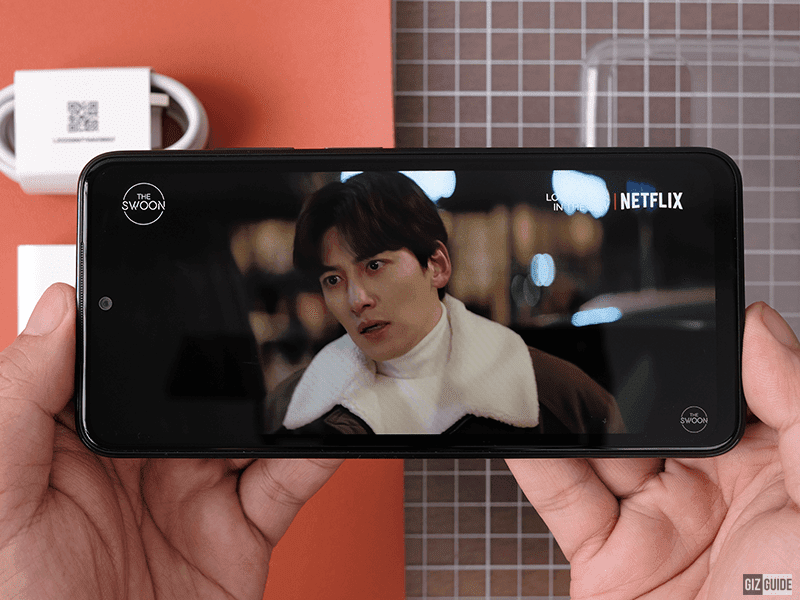 |
| Ji Chang Wook on Netflix |
In front of the Redmi Note 10 is the 6.43-inch Super AMOLED display with 2400 x 1080 resolution and Gorilla Glass Protection. The images produced are crisp and sharp with vibrant color and deep contrast. The panel is bright enough to be visible outdoors and under direct sunlight.
Rare AMOLED screen for the price
Lastly, the 10-point touch screen is quick, responsive, and accurate. We didn't notice any delay, misread taps or gestures. We are satisfied with the display overall.
 |
| Top and bottom side |
On the punch hole on top is the selfie camera. Around the panel are super slim bezels with a thicker chin bezel.
At the bottom of the phone are the speaker grill, USB Type-C, a microphone port, and a 3.5mm audio jack.
The earpiece is exclusively for calls only while the bottom-firing speaker produces a mono sound with underwhelming maximum volume. The sound at maximum volume is distorted and is noticeably tingy. We recommend raising the volume to 70 percent for the best quality.
The microphone recording with the Redmi Note 10 is good. The noise cancellation is good enough that gives our callers little to complain about voice quality.
Cameras
 |
| Redmi Note 10's camera |
At the back of the Redmi Note 10 is the rear-quad camera module made of a 48MP f/1.79 main camera, 8MP f/2.2 118-degree ultra-wide-angle camera, 2MP f/2.4 macro camera, and 2MP f/2.4 monochrome camera with LED flash.
Redmi has consistently been providing high-spec camera modules to more affordable price points and the new Redmi Note 10 does not disappoint.
The new camera app includes modes like Photo, Video, Night, Portrait, Pro, Panorama, Slow-Motion, Time-lapse, Documents, and 48MP mode.
The Pro mode allows for control of ISO (100-3200), Shutter Speed (1/4000-30 secs), White Balance, exposure compensation (+-4 stops), and focus. There is no control for metering modes.
The 48MP mode is shooting at full resolution without pixel binning.
Rear Camera Samples
 |
| Daylight 1x |
 |
| Daylight 2x |
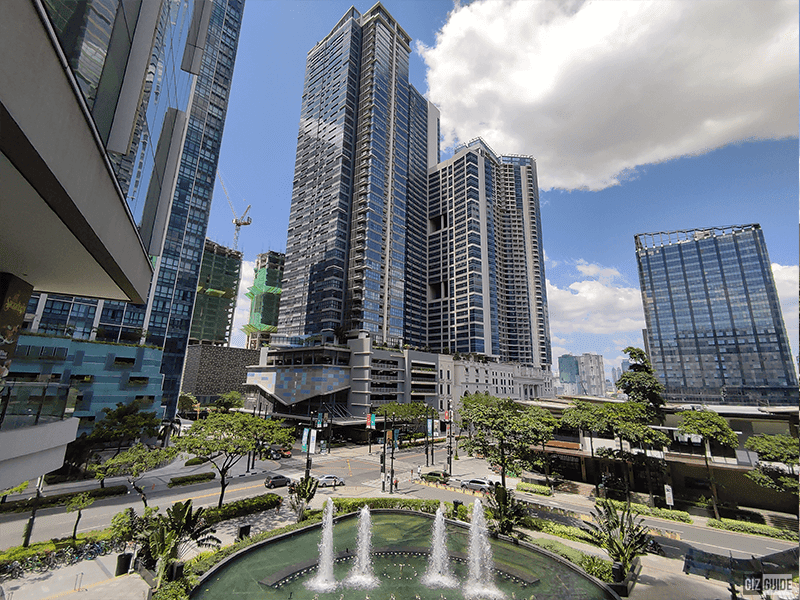 |
| Daylight ultra-wide |
In daylight, the 1x, 2x and ultra-wide cameras produce images with vibrant color and good contrast but only the 1x and the ultra-wide cameras produce pin-sharp images. The 2x is noticeably flatter, less detailed, and is oversharpened when compared to the 1x camera.
 |
| Indoor 1x |
 |
Indoor 2x
|
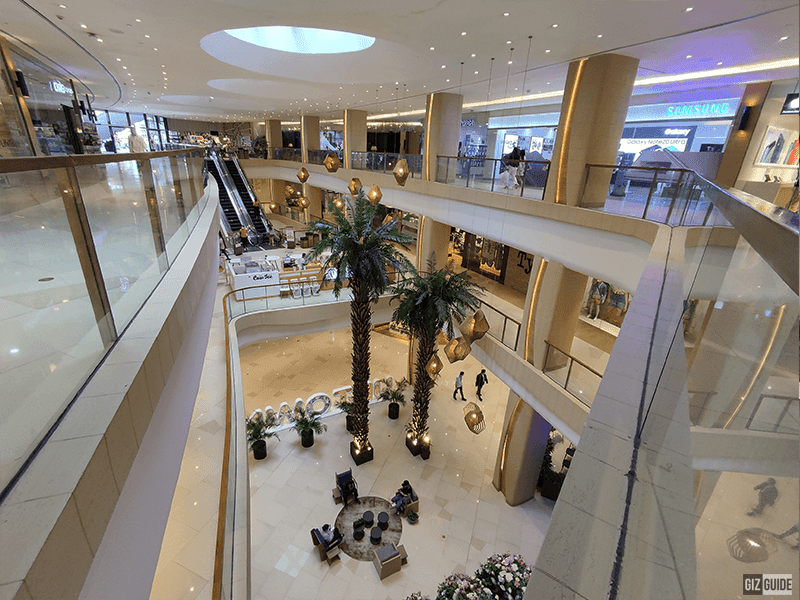 |
| Indoor ultra-wide |
The indoor image quality is similar in daylight and the images remain vibrant and contrasty across all cameras. The ultra-wide is slightly softer and slightly less vibrant in color when compared to the 1x and the 2x.
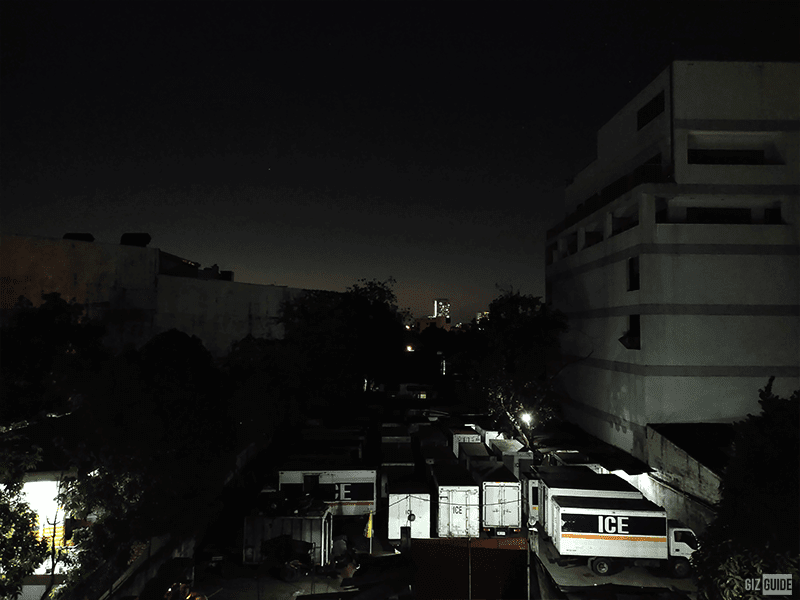 |
| Low light 1x camera |
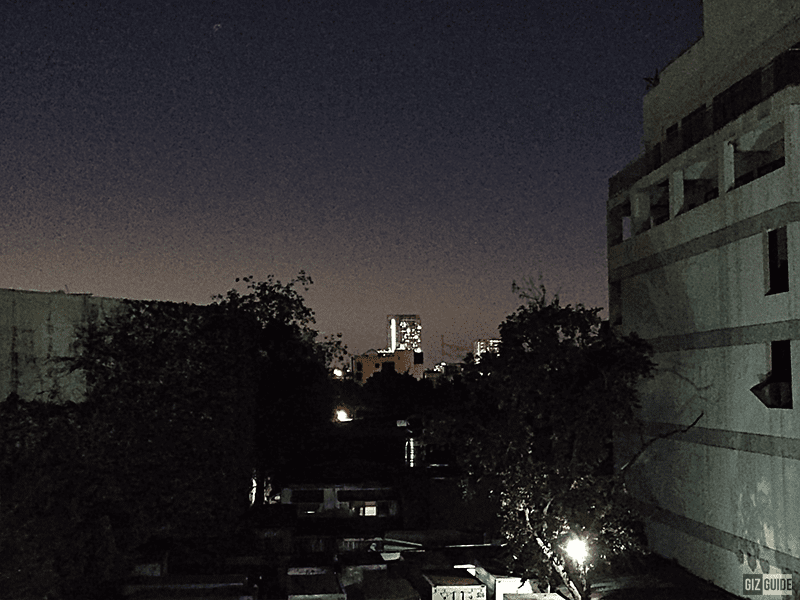 |
| Low light 2x camera |
 |
| Low light ultra-wide camera |
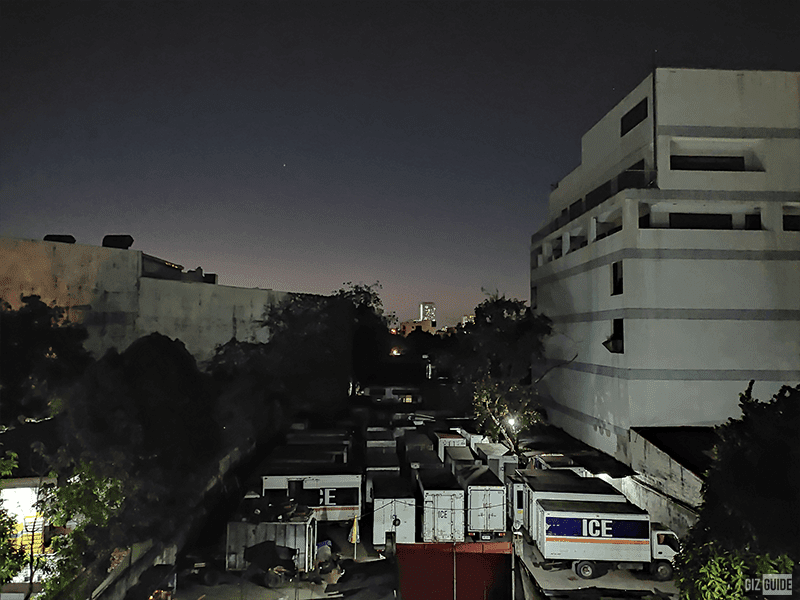 |
| Night mode |
In low-light, all cameras have struggled with noticeably more grain, softer details, and loss of color accuracy. The 2x and the ultra-wide have struggled the most with large grain and softest details.
Night mode is available for the 1x and 2x but we recommend only using the 1x as it may have strong noise reduction, but the detail is restored and the image is generally brighter than the low light main camera on auto.
 |
| Selfie camera |
The 13MP f/2.45 selfie camera can be found on the top left side of the display. Camera modes include Photo, Video, Night, Portrait, and Short video.
The camera app also features a screen flash feature if the user wants to improve the low light selfies.
The rear-facing camera can capture up to 4K at 30fps and 1080p 60fps without stabilization or up to 1080p 30fps with stabilization while the selfie camera is able to record up to 1080 at 30fps with EIS.
Users can switch between the main, ultra-wide, and 2x digital zoom in both photo and video modes.
Both the rear and front-facing cameras produce decently sharp and color-accurate video footage for its price. Our main concern is that stabilization is only available for 1080p 30fps for the main camera. The 4K 30fps and 1080p 60fps per second are noticeably shakier and have more grain in low light.
We recommend using an external gimbal and turning off the electronic stabilization to get the most stable and smooth footage from the Redmi Note 10 rear and front-facing camera.
In summary, the front and rear cameras are versatile in stills but struggle with video recording.
Performance
 |
| AnTuTu and GeekBench 5 Benchmark |
The Qualcomm Snapdragon 678 inside the Redmi Note 10 was able to score 241,504 in AnTuTu 9.0 and to score 538 single-core and 1674 multi-core in Geek Bench 5.3.2.
In the new 3D Mark Wild Life benchmark, Redmi Note 10 scored 484 overall with an average of 2.9 frames per second while keeping the temperature at a constant 29 degrees. There was no battery percentage loss as well.
 |
| Genshin Impact on Low Graphics Quality |
With the latest games like Genshin Impact, the Snapdragon 678 pushed the graphics settings to low but it is smooth and playable. We experience stuttering and frame rate drops when there are a lot of enemies and animations happening on screen. Graphics has noticeable tearing in some scenes. Otherwise, Genshin Impact is playable on the Redmi Note 10. The back of the phone gets warm after around 60 to 90 minutes of continuous play.
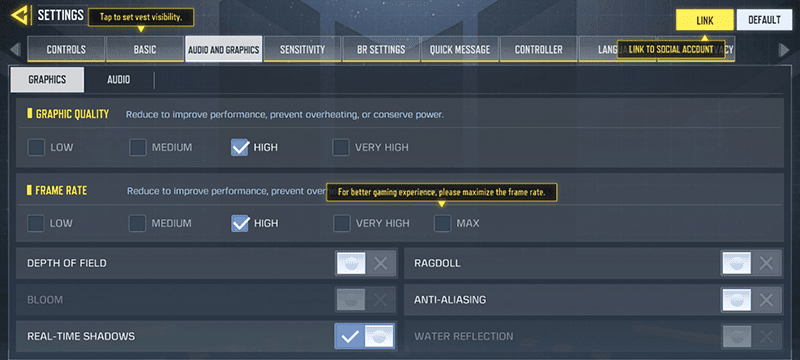 |
| Call of Duty: Mobile |
In older games like NBA Live 2K20, the graphics and frame rate can be pushed high. While in Call of Duty: Mobile, the user can either push the frame rate to Max but be limited to Very High graphics only. Alternatively, you can only have very high on both frame rate and graphics quality. This is the limitation of the SoC. We recommend tweaking it to your needs.
Both the face unlock and the fingerprint scanner set-up process is fast and straightforward. The face-unlock tech quickly detects my face and unlocks the phone as soon as the display is active. It is also able to detect my face even if I take off my glasses. It does struggle when you are trying to face unlock in a dim environment or when the user is wearing a mask.
The display brightens up to be able to compensate for this. It would be great if the Face Unlock has an alternative look feature for when the user is wearing a mask. While the fingerprint scanner is mounted on the power button. It detects our finger as soon as it hits the scanner. It then unlocks the phone instantaneously.
WiFi, Bluetooth, and LTE connections are stable. We've never experienced forced disconnections or the like while the GPS acquires our locations immediately and accurately.
 |
| PCMark Battery Benchmark |
Inside the Redmi Note 10 is a massive 5,000mAh battery that supports 33W Fast Charging via the USB Type-C port. There is no wireless charging support.
In our usual PCMark Battery Benchmark, the Redmi Note 10 was able to score 17 hours and 16 minutes which is an amazing feat by itself.
In our daily usage where we were constantly connected to WiFi and LTE. We would be doing our routine tasks where we use the phone to call, text, web surf, e-mail, stream music, and video, play games, and navigate with Waze, the Redmi Note 10 was able to last a full day of use with a 30 to 35 percent battery charge to spare. We would unplug the phone from the charger at 8 AM and at 8 PM we would get around vary between 25 to 35 percent of the battery left. It can last a whole day but just barely.
The 33W charger is able to charge the 5,000mAh battery from 0 to 100 percent in under 60 minutes. The phone gets a little warm when charging but it never gets alarmingly hot.
 |
| MIUI 12 |
Under the hood is Android 11-based MIUI 12. It features more visual tweaks that make MIUI stand out. It will depend on the user if they will like or dislike this UI design. For us, if you are used to MIUI, then the changes are nice but if you've never liked MIUI before, MIUI 12 may not change your mind.
The Snapdragon 678 is able to handle MIUI 12 in a decent manner. Navigating thru the OS and opening apps is decently fast enough. It isn't as snappy as more expensive phones, but it barely stutters.
Pros - Premium-like design, lightweight, value for money performance and specs, super long battery life, decent stills photos
Cons - Video footage is shaky at higher resolutions
Redmi Note 10 Specs
Display: 6.43-inch 2.5D curved Gorilla Glass 3 protected Super AMOLED screen w/ FHD+ 2400 x 1080 resolution at 409 ppi
CPU: 2.2GHz 11nm Snapdragon 678 octa-core processor
GPU: Adreno 612 GPU
RAM: 4GB/6GB LPDDR4X
ROM: 64GB/128GB UFS 2.2 expandable via microSD card slot up to 512GB (dedicated)
Back Camera: 48MP f/1.79 w/ PDAF + 8MP f/2.2 118-degree ultra-wide-angle + 2MP f/2.4 macro + 2MP f/2.4 depth + LED flash
Selfie Camera: 13MP f/2.45
Battery: 5,000mAh w/ 33W fast charging
OS: Android 11 w/ MIUI 12
Connectivity: WiFi 802.11a/b/g/n/ac (2.4GHz/5GHz), 700MHz 4G LTE, Bluetooth 5.1, FM Radio, OTG, GPS, A-GPS, GLONASS, BeiDou, Galileo, dual SIM
Sensors: Accelerometer, light, orientation, proximity, gyroscope, sound, magnetic, pressure
Others: Side-mounted fingerprint sensor, face unlock, IR Blaster, IP53 water splash resistance, stereo speakers, Hi-Res Audio, dual-mic, USB-C, Colors: Onyx Gray, Pebble White, Lake Green
Dimensions: 160.46 x 74.5 x 8.29 mm
Weight: 178.8 g
Price: PHP 8,490 (4GB/64GB), PHP 9,990 (6GB/128GB)
Verdict
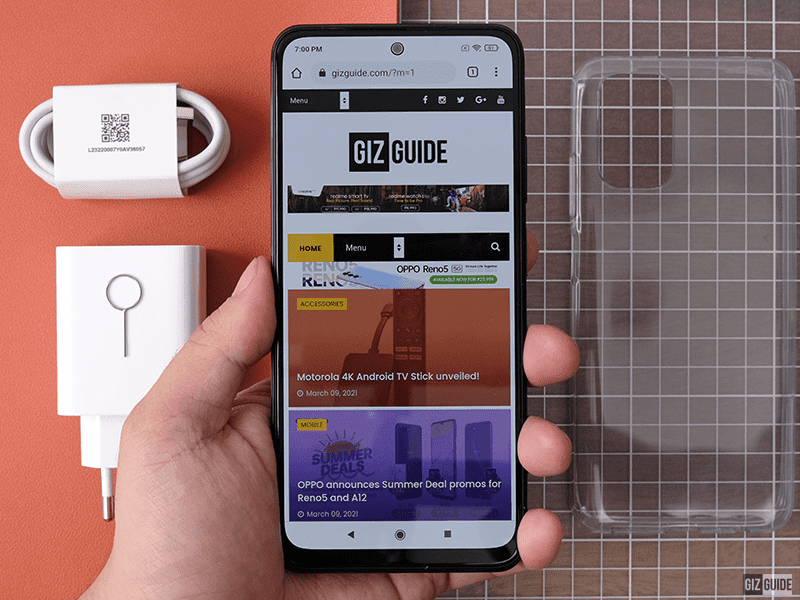 |
| How does it fare? |
At its starting price, the Redmi Note 10 is hard to compete with. Our only main concern with the phone is that the video footage at higher resolution is shaky while the 4GB/64GB memory configuration could be lacking for 2021. The latter is easily remedied with the more expensive 6GB/128GB variant. We feel that apps and file sizes are so large now that 64GB is lacking now.
The performance and specs are comparable to more expensive phones and Redmi continues to undercut the competition even more.
We highly recommend the Redmi Note 10 if you like MIUI 12 and if you can purchase it from official channels. There is almost no downside.
What do you guys think?
Build/Design - 4.25
Multimedia Experience - 4.25
Cameras - 4
Performance - 4.25
Average - 4.125/5





























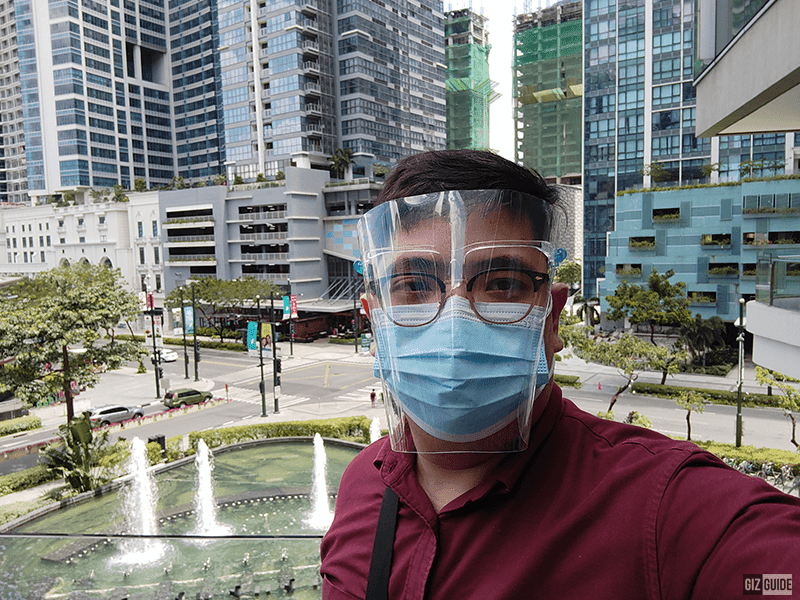





















Post a Comment